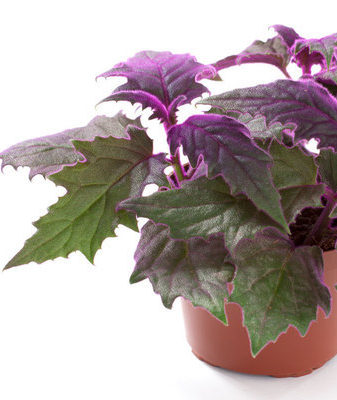Balsam New Guinea
Content:

Balsam New Guinea: photo of the variety
Balsam New Guinea is a beautiful houseplant that blooms with bright inflorescences in the shape of a cap.
New Guinea balsam: flower description

Balsam New Guinea: photo of the variety
New Guinea balsam: video about planting and caring for a plant at home
Balsam New Guinea is a young hybrid culture that belongs to the balsam family. The plant is perennial. The foliage can be unusually bronze or dark green. The stems of the plant are very powerful with a red tint. Blooms almost all year round. The inflorescences are very large, the colors can be different: from white to deep scarlet. In addition, flowers on one bush may differ.
In order for the New Guinea Balsamine flower to bloom and delight you with its appearance, you need to follow some rules.
Balsam New Guinea: planting at home
The place for growing New Guinea balsam should be chosen bright, but without direct rays of the sun. An ideal place would be window sills with an east or west direction. Lack of lighting can have a detrimental effect on the flowering of a crop. If you want to admire its flowering in the autumn-winter period, then you will have to provide it with fourteen hour daylight hours. This is important to him.
Balsam New Guinea: temperature and humidity
Balsam New Guinea loves warm conditions, so the temperature in the room can vary from eighteen to twenty-four degrees. He does not like sudden changes in temperature. It can be taken out into the fresh air (balcony or porch) only when the daytime temperature differs from the nighttime by five to eight degrees. In winter, strong wind currents and cold drafts should not be allowed, because the foliage of this plant quickly freezes over, and the plant itself may die.
For good growth and active development of balsam, air humidity is also important. It should be about forty to sixty percent. To maintain the desired level, you can place a container with wet expanded clay or crushed stone near the flower. In winter, foliar spraying can help with this. You can spray the plant only with a soft, clean, filtered liquid.
It is important to know that with a low percentage of air humidity, New Guinea balsam will shed flowers and buds.
Suitable dredge
The soil for this plant must be light, nutritious, well-drained, moisture-absorbing and with neutral acidity. You can buy a special soil in a garden store, but add brick crumbs and vermiculite to it. A drainage layer is also needed so that the liquid does not stagnate in an earthen coma.
Balsam New Guinea: home care
Even assuming that this is an unpretentious plant, you will have to show some attention.
New Guinea balsam: watering rules
Watering should be regular and abundant. But moisture stagnation should not be allowed, this can adversely affect the root system of the culture. It is necessary to make sure that the soil in the pot is always slightly damp.
Fertilizers and feeding
You can feed New Guinea balsam a couple of times every thirty days. To do this, you need to choose a universal complex fertilizer, in which potassium prevails. It is better not to use nitrogen fertilizers, because then the flower will grow greenery, not buds.
Pinching and trimming rules
The New Guinea balsam flower grows quickly, but if you cut it, it grows. For prevention purposes, you need to pinch the tops of the shoots. But do not cut, because then the trunks of the plant will become too thick, which will affect the decorative effect.
New Guinea balsam: plant transplant
Since New Guinea balsam does not fall into a state of rest, it can be transplanted at any time. In order for the plant to bloom brightly and profusely throughout the year, it must be planted in a not very spacious pot. So he will not need to build up the root and system, and he will use all his strength to bloom.
When transplanting, young plants are recommended to be transplanted into a slightly larger pot.
Adult specimens can be propagated by the cuttings method.
For the transplant of New Guinea balsam to be successful, you need to fill the selected pot with a drainage layer by twenty-five percent. Next, lay a layer of suitable soil mixture and spill with water (room temperature, settled and filtered). The land in which the flower grows must be well shed before transplanting so that the plant can be safely removed and not damage its root system. After you take out the flower, you need to carefully examine its root system, if there are any damaged areas, then they need to be cut off, and the cut sites must be disinfected with coal powder. It is necessary to place the plant in a new container strictly with its native earthen lump.
New Guinea balsam: flower reproduction
Propagation of New Guinea balsam using cuttings
This is the easiest and most productive method. In order to propagate balsam using cuttings, you need to pinch off the top of a healthy and strong shoot (it is important that it has at least three internodes), then it must be cut off slightly below average. It can then be rooted in liquid or wet coarse sand. In about fifteen to twenty days, the roots should appear.
Propagation of New Guinea balsam using seeds
This method is also possible. Seeds are formed and ripen after the wilted inflorescences fall off. The seeds must be healthy, undamaged and mature. They need to be removed from the seed pod. Dry in a warm, light and not damp place with good air circulation. For sowing purposes, you can use peat pots, you need to fill them with a soil mixture from peat soil and coarse sand. Then spill with water (room temperature, soft, separated and filtered). Next, cover with transparent film to create a greenhouse effect.
Important to remember the fact that if you are dealing with a hybrid plant, what will grow from its seeds may be different from itself.
Potential diseases and insect pests of the plant
Most diseases of indoor plants are directly related to improper care of them.
Root rot
Root rot is a disease of the root system. It develops due to too frequent and abundant watering. Initially, it develops on the roots, but if timely measures are not taken, it will go to the trunk of the plant and then the culture will die. It is important to recognize this defeat in time. Then you need to remove the plant from its soil and cut off the affected areas, and treat the cuts with coal powder for disinfection.
Insect pests
Spider mite is a small insect that sucks out nutritious juices and weaves a small web. With his presence, the foliage of the culture will curl.
Aphids and whiteflies also love to profit from a flower. You can get rid of them either by hand or simply by rinsing the plant under a warm shower.
Conclusion
If you adhere to the rules of care and cultivation, then New Guinea balsam will delight you with its abundant and bright flowering.
Balsam New Guinea: photo of a flower







